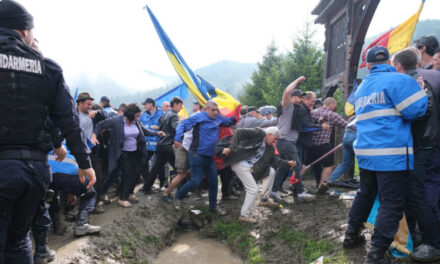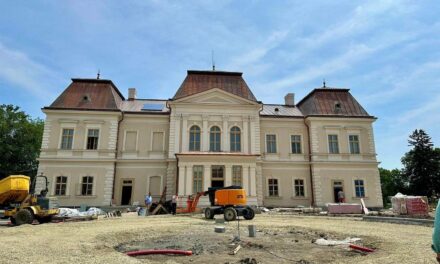The neglect of the Romanian railway infrastructure has led to the fact that today the trains run slower, with an average speed of 45 kilometers per hour, than a hundred years ago, when, according to the press of the time, trains reached an average of 50-60 kilometers per hour in passenger transport. 73 percent of the Romanian railway lines have reached the end of their planned service life, and 33 kilometers of tracks can be modernized from the funds allocated for railway track renovation in this year's and next year's budgets, which is just over 3 thousandths of the tracks with expired service life, announced on Monday in its compilation of the state of the Romanian railway infrastructure Digi24.ro news portal.
Citing the 2021 report of the State Audit Office and the data provided by the Ministry of Transport, the newspaper wrote that Romania has a track network of 13,500 kilometers, of which 9,829 kilometers of railway tracks have reached the end of their service life. Of the 17,694 bridges and piers, the lifespan of which was determined to be 40 years, 9,223 (52 percent) need to be renovated. 61 percent of railway embankments, 35 percent of tunnels, 84 percent of signaling devices, 76 percent of overhead lines, and 65 percent of transformer stations have expired, Digi24.ro listed.
41.6 percent of railway bridges were built more than a hundred years ago. The newspaper tried to find out how many of the bridges are considered dangerous, but the Ministry of Transport gave an evasive answer to this question. The ministry referred to the fact that there are no parameters in the standards used by the profession, based on which railway bridges could be classified into "danger categories". However, in a 2019 report of the Prime Minister's Commission of Inquiry, it is stated that the Railway Agency registers 1,171 dangerous track sections, the total length of which is 592 kilometers.
In the period 2014-2018, 43 kilometers of railway tracks were modernized, and in this year's and next year's budgets, money was earmarked for the renovation of 32.5 kilometers of railway tracks.
In response to Digi24.ro's inquiry, former transport minister Radu Berceanu explained the perennial underfunding of the railways with the short-term political interests of political decision-makers. According to him, public funds were always preferred to be spent on wages and pensions than on investments, which is why Romania has 1,300,000 public employees, when 800,000 would be enough.
According to Ludovic Orban, former Minister of Transport and former Minister of Mechanics, the Ministry of Finance in Bucharest always found other priorities when money was requested for the maintenance of the railway, even though European funds could also be called upon for track renovation.
The newspaper Adevarul stated in January: the neglect of the Romanian railway infrastructure has led to the fact that today trains run slower, with an average speed of 45 kilometers per hour, than a hundred years ago, when, according to the press of the time, trains reached an average of 50-60 kilometers per hour in passenger transport.
MTI
Cover photo: szekelyfold.ma












